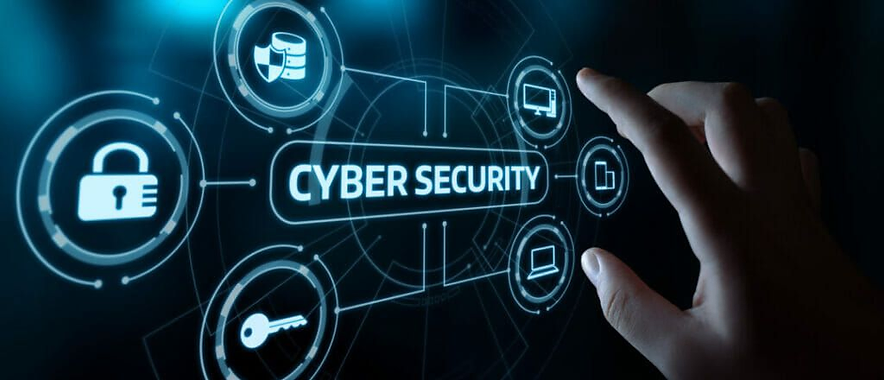Cyberattacks are more frequent than we can imagine, reports show around 2,00,000 attacks per day in India for the first quarter of 2022, hence cyber security is the key to being safe.
Internal problems are as concerning as external ones, such as a cyberattack. However, when a company faced an insider danger, it was significantly more expensive than an external occurrence. This was primarily due to the savvy insider’s ability to conceal the crime for months, years, or even forever. Cybercrime is the most dangerous to any firm in the world. The contemporary age’s oxygen is information. It seeps through the barbed-wire-topped barriers and wafts across the electric borders.

Why is cybersecurity important? What if it’s not there? With an expanding number of users, devices, and programs in the contemporary organization, as well as an increasing deluge of data, most of it sensitive or secret, the relevance of cybersecurity is growing. The increasing volume and skill of cyber attackers and their attack strategies exacerbate the situation. Cybersecurity is indeed the safeguarding of internet-connected systems against cyberthreats such as hardware, software, and data. Individuals and businesses utilize the method to prevent illegal access to data centers and other digital systems. A robust cybersecurity plan would provide a strong security posture against hostile attacks aimed at assessing, altering, deleting, destroying, or extorting an organization’s individual user systems including sensitive data. Cybersecurity is also important in thwarting attacks that try to disable or impair the operation of a system or device.
There are various challenges/threats such as Hackers, data loss, privacy, risk management, and changing cybersecurity techniques all provide a big threat to cybersecurity. The number of cyberattacks is unlikely to fall in the foreseeable future. Furthermore, increasing attack vectors, like the emergence of the internet of things (IoT), raise the need to safeguard networks and devices. The changing nature of security dangers is one of the most difficult aspects of cybersecurity. New attack channels emerge as new technologies emerge and technology is exploited in new or different ways. It can be difficult to keep up with the constant changes and developments in assaults, as well as to update strategies to guard against them. Concerns include ensuring that all aspects of cybersecurity are kept up to date to defend against any vulnerabilities. Furthermore, corporations can collect a large amount of prospective data about individuals who utilize one or both of their services. As more data is collected, the probability of a cybercriminal attempting to steal personal identifying information (PII) increases. For example, a company that saves personally identifiable data in the cloud may be the target of a ransomware assault. Organizations should do all possible to avoid a cloud compromise.
Employees may carry malware into the office on their computers or mobile devices, thus cybersecurity strategies should include end-user education. Employees may help keep their firm secure from cyber threats by receiving regular security awareness training. Another cybersecurity concern is a scarcity of skilled cybersecurity workers. As the volume of data gathered and used by organizations expands, so does the demand for cybersecurity personnel to evaluate, manage, and respond to problems. The workplace mismatch between needed cybersecurity positions and security specialists is projected to be 3.1 million.
There are various domains of cybersecurity. A robust cybersecurity plan includes many layers of defense to combat cybercrime, such as cyber assaults that seek to access, modify, or delete data, extort money from users or the company, or disrupt routine business activities. Countermeasures should handle the following:
- Critical infrastructure security includes safeguarding the computer networks, networks, and other assets on which society relies for global defense, the health of the economy, and/or public safety. The National Institute of Standards and Technology (NIST) has developed a cybersecurity framework to assist enterprises in this area, while the United States Department of Homeland Security (DHS) offers further assistance.
- Network security refers to the security procedures used to safeguard a computer network from attackers, which include both wired as well as wireless (Wi-Fi) connections.
3. Application security – Procedures that aid in the protection of on-premises and cloud-based applications. Security should be incorporated into programs from the start, including concerns for data handling, user authentication, and so on.
4. Cloud security entails encrypting cloud storage media, in movement. And in use (during processing) to satisfy consumer privacy, corporate requirements, and compliance requirements standards.
5. Information security – Data protection procedures, including the General Data Protection Regulation (GDPR), protect your most sensitive data from illegal access, disclosure, or theft.
6. End-user education entails raising security awareness within the enterprise to improve endpoint security. Users, for example, can be taught to remove suspicious email attachments and to avoid utilizing unrecognized USB devices.
It’s simple to see why cybersecurity is in such high demand after studying what it is and why it’s crucial. This is a difficult subject, but it is critical. The importance of cybersecurity should be understood by everyone, from the world’s most prominent CEOs to ordinary Twitter users.
These cybersecurity examples are just a small sample of the dangers and defense strategies available today. Understanding the fundamentals is the first step toward being secure in today’s digital environment.





